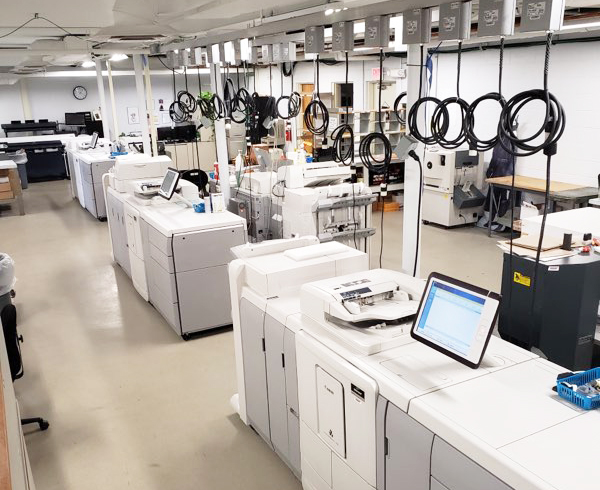Are you looking for a simple and cost-effective way to give your home a new look? Look no further than painting! Painting your home’s interior is one of the most effective ways to transform its overall appearance and create a fresh and inviting atmosphere. Not only is it a great way to add a personal touch to your living space, but it also has the power to completely change the mood and energy of a room. In this blog post, we will discuss the benefits of painting your home and provide tips for a successful and stress-free painting experience. Get ready to paint a beautiful picture in your home!
Table of Contents
The Importance of Interior Painting for Home Aesthetics
A fresh coat of paint can work wonders for your home’s aesthetics. It has the power to completely transform the look and feel of a room, giving it a new lease on life. But beyond just the surface-level changes, interior painting plays a crucial role in creating a welcoming and inviting atmosphere that truly reflects your personal style.
One of the key benefits of interior painting is the ability to express yourself and add a personal touch to your living space. Whether you prefer soothing neutrals, bold and vibrant colors, or anything in between, the color choices you make can reflect your personality and set the mood for each room.
Additionally, interior painting can greatly enhance the overall aesthetics of your home. It can help create visual harmony and balance, making your space more visually appealing and comfortable. A well-chosen color scheme can make a room feel larger, brighter, or cozier, depending on your preferences.
Not only does painting have a significant impact on the appearance of your home, but it also has the potential to increase its value. A fresh and well-maintained paint job can greatly improve the first impression of potential buyers or renters, making your home more marketable.
Choosing the Right Colors: Tips and Trends
Choosing the right colors for your home is an exciting yet challenging task. It’s important to select colors that not only reflect your personal style but also create the desired mood for each room. Here are some tips and trends to help you make the perfect color choices.
Firstly, consider the function of each room. If you want a tranquil and calming bedroom, opt for soft and soothing colors like blues or neutrals. For a vibrant and energetic kitchen, go for bold and bright colors like reds or yellows. Understanding the purpose of each room will guide you in selecting the appropriate colors.
Next, take inspiration from current color trends. Keep an eye on popular interior design magazines, websites, and social media platforms to see what colors are in vogue. Pastel shades, earthy tones, and monochromatic color schemes are currently on-trend and can give your home a modern and stylish look.
Don’t forget about the lighting in your home. Natural light can change the way colors appear, so it’s important to test paint swatches in different lighting conditions. Consider how the color looks during the day and at night, as well as how it complements your furniture and decor.
Lastly, don’t be afraid to experiment! Painting is a fun and creative process, so feel free to mix and match colors to create a unique and personalized space. If you’re unsure, start with a small accent wall before committing to painting an entire room.
Choosing the right colors for your home can truly transform its overall appearance. By following these tips and staying up-to-date with current trends, you can create a space that is not only visually appealing but also reflects your personal style and enhances the mood of each room.
How to Prep Your Space Before Painting
Preparing your space before painting is a crucial step to ensure a successful and long-lasting paint job. Taking the time to properly prep your walls and furniture will not only make the painting process smoother but also result in a professional-looking finish. Here are some essential tips on how to prep your space before painting.
Firstly, remove any furniture or decor items from the room. Clearing out the space will give you more room to work and prevent any accidental paint spills or damage to your belongings. If moving furniture is not possible, cover it with plastic sheets or drop cloths to protect it from paint splatters.
Next, clean the walls thoroughly. Dust, dirt, and grime can interfere with the paint’s adhesion, causing it to peel or chip prematurely. Use a mild detergent and warm water to wipe down the walls, paying attention to any particularly dirty areas. Allow the walls to dry completely before moving on to the next step.
Repair any imperfections on the walls, such as holes, cracks, or dents. Use a spackling compound to fill in the holes and a putty knife to smooth it out. Sand the patched areas lightly to create a smooth surface. For larger cracks or extensive damage, consult a professional for repair.
Once the walls are clean and repaired, it’s time to protect the surrounding areas. Cover the floors with drop cloths or plastic sheets to prevent paint spills and drips. Use painter’s tape to mask off areas you don’t want to paint, such as baseboards, window frames, and electrical outlets.
Lastly, prime the walls if necessary. Primer helps the paint adhere better and provides a more even finish. If you’re painting over a dark or bold color, using a primer can also help to prevent bleeding or show-through.
By following these steps and taking the time to properly prep your space, you’ll ensure a smooth and successful painting experience. Remember, the key to a flawless paint job is in the preparation!
The Proper Technique of Painting: Brushes vs Rollers
When it comes to painting the interior of your home, choosing the right tools is essential for achieving a flawless finish. Two popular options for applying paint are brushes and rollers, each with their own pros and cons. Let’s explore the proper technique of using brushes vs rollers to help you make the best choice for your painting project.
Brushes are a versatile tool that allows for precise application of paint, especially in small or intricate areas. They are ideal for cutting in and creating clean lines along edges and corners. Brushes also offer better control when painting intricate surfaces like trim or molding. However, using brushes can be time-consuming and may result in visible brush strokes if not applied correctly.
On the other hand, rollers are perfect for large, flat surfaces such as walls or ceilings. They can cover a larger area quickly and provide a smooth, even finish. Rollers also minimize the chances of leaving brush strokes, giving a more uniform appearance to your walls. However, rollers are not suitable for painting tight spaces or corners, where a brush would be more effective.
To achieve the best results, it’s often recommended to use a combination of both brushes and rollers. Start by using a brush to cut in around edges, corners, and trim. Then, use a roller to cover larger areas for a seamless finish. This technique combines the precision of a brush with the efficiency of a roller.
Remember to choose high-quality brushes and rollers that are appropriate for your paint type and surface. Clean and maintain your tools properly to ensure their longevity and optimal performance.
By understanding the proper technique of using brushes vs rollers, you can achieve professional-looking results for your painting project. Whether you choose brushes, rollers, or a combination of both, the key is to take your time, work systematically, and maintain a steady hand. Happy painting!
Common Mistakes to Avoid when Painting Your Interior
Painting the interior of your home can be a rewarding and exciting project, but it’s important to be aware of common mistakes that can easily be avoided. By steering clear of these pitfalls, you’ll ensure a smooth and successful painting experience.
One common mistake is neglecting to properly prepare your walls before painting. Failing to clean the walls, repair any imperfections, or use a primer can result in a less-than-perfect finish and reduced longevity of your paint job. Taking the time to prep your space will pay off in the long run, so don’t skip this step.
Another mistake to avoid is rushing through the painting process. Applying multiple thin coats of paint is better than one thick coat, as it reduces the chances of drips, streaks, and visible brush or roller marks. Take your time, work in sections, and allow each coat to dry fully before applying the next.
Additionally, not using the right tools and materials can lead to disappointing results. Low-quality brushes and rollers can leave behind bristles, lint, or streaks on your walls. Invest in high-quality tools that are appropriate for your specific paint type and surface.
Lastly, failing to protect your furniture and floors during the painting process can result in accidental spills, drips, and splatters. Take the time to cover your furniture with plastic sheets or drop cloths and lay down protective coverings on the floor. This will save you from unnecessary clean-up and potential damage.
By being mindful of these common mistakes and taking the necessary precautions, you’ll be well on your way to achieving a professional-looking finish and enjoying the transformed appearance of your home. Happy painting!
Clean-Up and Maintenance Post-Painting
After you’ve completed the exciting task of painting your home’s interior, it’s important to take some time for clean-up and maintenance to ensure your fresh paint job stays looking its best for years to come.
Start by cleaning your brushes and rollers. If you used water-based paint, simply rinse them with warm water and a mild detergent until the water runs clear. For oil-based paint, use a paint thinner or mineral spirits to clean your tools. Make sure to remove any excess paint from the bristles or nap to prevent clumping and preserve the shape of your brushes and rollers.
Next, give your painted walls a thorough inspection. Look for any areas that may have been missed or require touch-ups. If you spot any imperfections, take note of them and make a plan to fix them as soon as possible. Touching up small spots is much easier than trying to fix larger areas later on.
Regular maintenance is key to keeping your painted walls looking their best. Avoid harsh chemicals and abrasive cleaners, as they can damage the paint. Instead, use a soft cloth or sponge with mild soap and water to gently clean any dirt or smudges that may appear over time.
Lastly, consider adding a fresh coat of paint every few years to maintain the beauty and durability of your interior walls. This will help keep your home looking fresh and vibrant, and it’s a great opportunity to switch up your color scheme if desired.
By following these clean-up and maintenance tips, you can ensure your painted walls stay looking flawless and vibrant for years to come. Enjoy the beauty and transformation of your freshly painted home!
Hiring a Professional vs DIY: Weighing Your Options
Are you considering painting your home’s interior but unsure whether to tackle the project yourself or hire a professional? It’s an important decision that depends on several factors, including your skill level, available time, and budget. Let’s weigh the options of hiring a professional versus DIY to help you make an informed choice.
Hiring a professional painter offers many benefits. They have the expertise and experience to ensure a high-quality finish and can complete the project efficiently. Professionals also have access to professional-grade equipment and materials, which can result in a longer-lasting paint job. Hiring a professional saves you time and eliminates the stress of prepping, painting, and cleaning up.
On the other hand, opting for a DIY approach can be a rewarding and cost-effective choice. If you enjoy taking on home improvement projects and have the time and patience to dedicate to painting, DIY can be a great option. It allows you to have complete control over the project and allows you to add a personal touch to your home. However, keep in mind that DIY painting requires proper preparation, research, and attention to detail to achieve professional-looking results.
Ultimately, the decision between hiring a professional and DIY painting comes down to your specific needs, preferences, and resources. Consider your budget, time availability, and skill level when making your choice. Remember, no matter which option you choose, the most important thing is to enjoy the process and create a beautiful space that reflects your personal style. If you are looking for Indianapolis painting, check our All Pro.











